A comprehensive analysis of New Zealand batsmen against different bowling types

The first Test between England and New Zealand is underway and we have already witnessed a feat which in all probability won’t be repeated in the near, or even distant future. Devon Conway became the seventh player ever to score a double century on Test debut, and the first ever on hallowed turf of Lord’s. Despite his heroic effort though, where he almost carried his bat, New Zealand only managed to score 378 runs. Among the dismissals of the lower middle order which collapsed from 288/3 to 338/9, Mitchell Santner’s was the softest, and the most in line with what the numbers of New Zealand’s batsmen against different bowling types tell us. Let’s have a look.
First let’s look at the averages of New Zealand’s batsmen in the last 5 years in Test cricket against different bowling types. You can see in Fig 1 why Santner’s dismissal was on expected lines. His averages against Right Arm Medium and Right Arm Fast bowlers are 17.11 and 15 respectively. He just can’t stick around against the bowling variety which is found in most abundance — right arm pace. Which is probably why he ended up playing a nothing shot to Mark Wood on Day 2 and got out without adding a run to his tally, further consolidating his already proven susceptibility.

Other noticeable observations that can be made from Fig 1 are :
- Kane Williamson’s supremacy against any kind of left arm bowling and right arm off spin with averages of more than 120 and 105.67 respectively (there’s a caveat to this which we will see later)
- Ross Taylor’s dominance against leg spin (average of 83.67)
- Tom Latham’s solidity against right arm off spin (average of 79.62) and horror show against left arm pace (average under 20)
- Henry Nicholls’ susceptibility against off spin (average of 37)
- BJ Watling’s struggles against high left arm pace (average of 16.75) and
- Colin de Grandhomme’s issues against the ball turning away from him (average under 30).
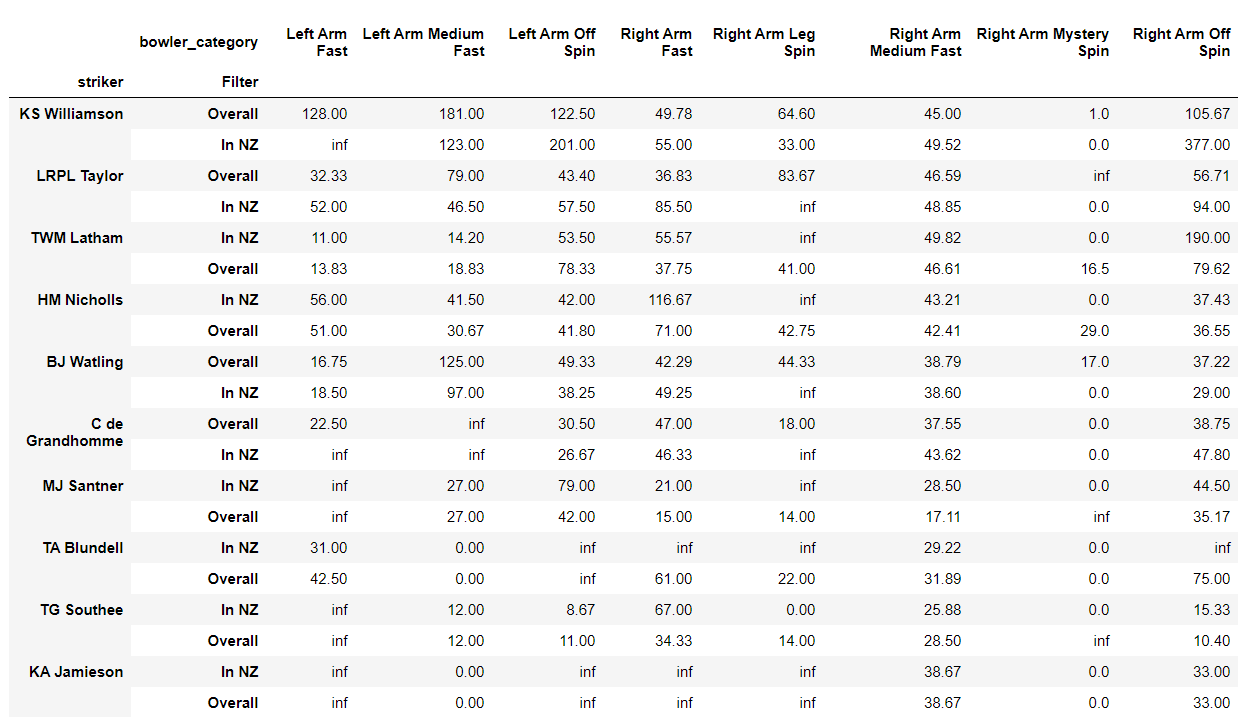
Fig 1: Average of New Zealand’s batsmen against different types of bowlers in the last 5 years in Test cricket. The numbers are divided into overall numbers in the last 5 years and numbers in NZ in the last 5 years for each batsman. [The ‘inf’ values mean the batsman has not got out to that particular bowling type, while the ‘0.00’ values mean the batsman hasn’t faced that particular bowling type.]
Fig 2 shows the Balls Per Dismissal of New Zealand’s batsmen against different bowling types in the last 5 years. Let’s confirm the observations we made above and see if we can find anything new.
Mitch Santner’s BPD against right arm medium pace is 55.89, which drops down to 45 BPD against right arm extreme pace. Compare that to his average Balls Per Innings, which you find in the article on Weighted Averages of New Zealand’s batsmen, and you see a drop of 3 and 13 balls respectively. Not only that, his average scoring rate against right arm medium and right arm extreme pace drops 0.67 and 0.51 rpo (Fig 3) from his average scoring rate of 2.51. respectively. This corroborates the point made earlier- Santner can’t stand his ground against right arm pace.
Williamson’s edge over left arm and off spin bowling can be further explained by Fig 2. While his average BPD in the last 5 years has been around 104 balls, it rises to 141.17 against off spin overall, and to a mind-numbing 447 against off spin in New Zealand. There’s just no point bowling off spin to Williamson in New Zealand. And to add to that, there’s almost no point bowling any kind of left armers to him, anywhere. His BPD against Left Arm Orthodox, Left Arm Medium, and Left Arm Fast reach stratospheric heights — 213, 309, and 301 respectively.
Taylor’s BPD against leg spin is his second highest after his BPD against Left Arm Medium pace, while his scoring rate against leg spin is his highest. He likes the ball turning away from him, which is evident from his scoring rates of above 4 rpo against both right arm leg spin and left arm off spin. Latham’s solidity against spin is visible as well with BPDs of 157 and 132 against right arm and left arm off spin respectively. And while we saw Nicholls having a slightly lower than normal average against right arm off spin in Fig 2, his BPD is pretty high, in fact its his third highest after his BPD against right arm medium and right arm extreme pace. The problem is he can’t find ways to score against off spinners, which can be seen in his scoring rate- almost half a run lower than his average scoring rate. And while he does manage to score quicker against the ball turning into him, he does get out to it more often too. In short, his game against spin is not as solid as others’.
A couple of other interesting things to note in Fig 2 and Fig 3 are Colin de Grandhomme’s and Tim Southee’s scoring rates against right arm extreme pace, and Southee’s BPD against any kind of spin. Both like pace on the ball and score at more than run a ball, while Southee just can’t control himself against spinners and gets out very quickly against them.
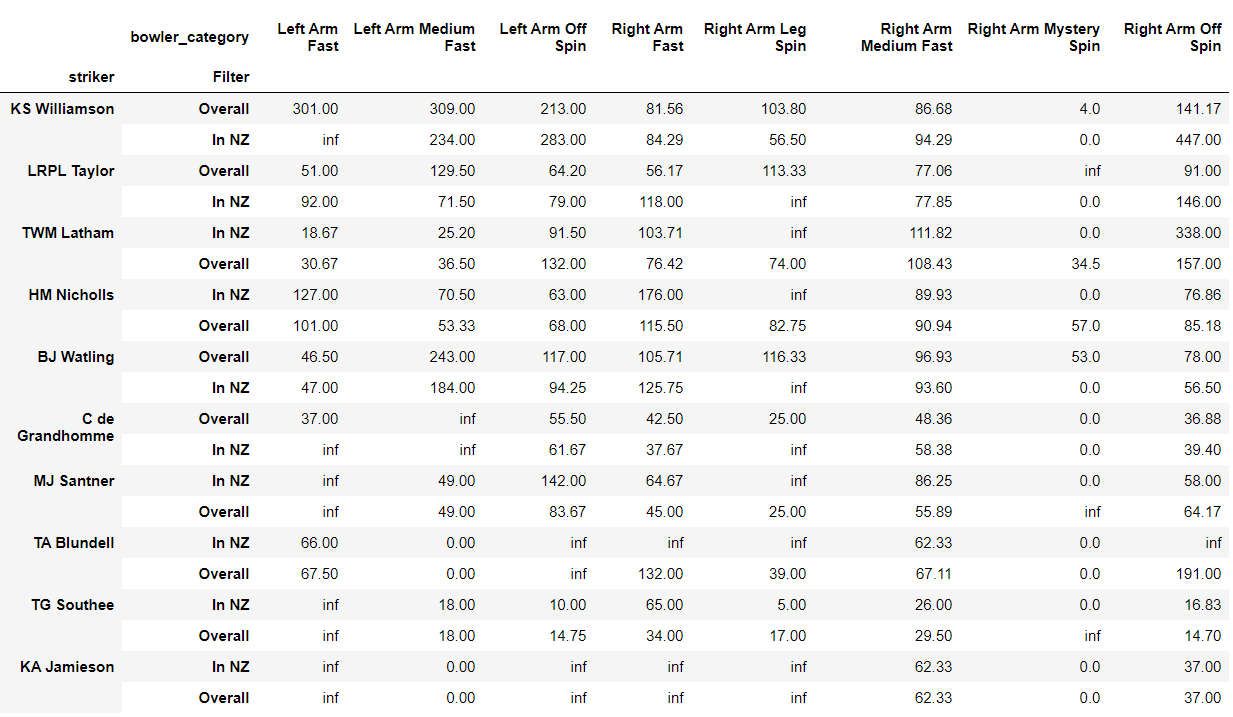
Fig 2: Balls Per Dismissal of NZ’s batsmen against different bowling types in the last 5 years. [The ‘inf’ values mean the batsman has not got out to that particular bowling type, while the ‘0.00’ values mean the batsman hasn’t faced that particular bowling type.]
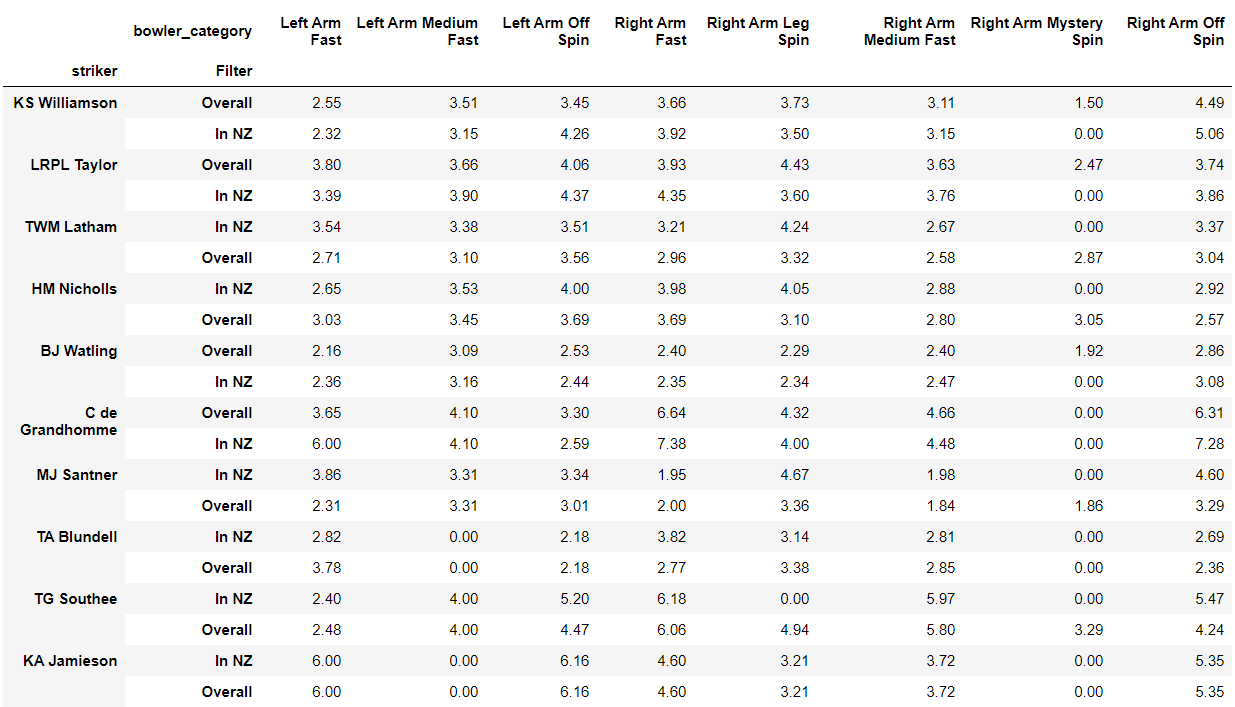
Fig 3: Scoring Rate of NZ’s Batsmen against different bowling types in the last 5 years. [The ‘0.00’ values mean the batsman hasn’t faced that particular bowling type.]
Till now, we’ve seen how quickly the batsmen score, how quickly they get out, and how much they score per wicket against different bowling types. Now let’s take a look at how often they have actually got out against different bowling types.
Fig 4 shows the percentage of dismissals of the batsmen against different bowling types in the last 5 years. While the percentages are supposed to be the highest against Right Arm Medium pace since that is the style of bowling that’s most prevalent, look for percentages above or close to 20% for any other bowling type to see if there’s a specific weakness which has actually been exploited by teams in the last 5 years.
The numbers which stand out in this are :
- Latham’s 19% dismissals against left arm medium and left arm extreme pace combined
- Nicholl’s 22.4% dismissals against off spin
- Watling, Santner, de Grandhomme and Southee’s more than 20% dismissals against off spin
- Williamson, Latham, and Santner’s close to 20% dismissals against extreme right arm pace.
All of these observations except for Williamson and Latham’s high dismissal rates against extreme pace, and Watling and Santner’s high dismissal rates against off spin, were established earlier. This just hits the nail on the head.
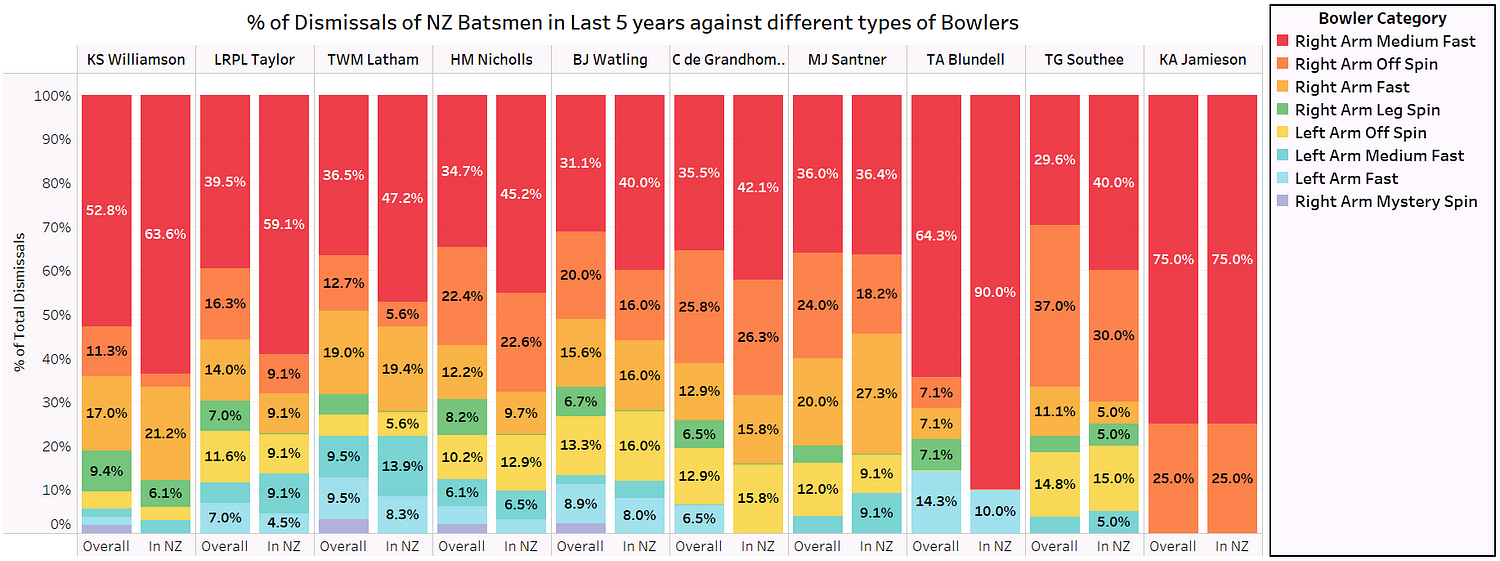
Fig 4: Percentage of Dismissals of NZ Batsmen against different bowling types in the last 5 years
We’ve got more than a fair idea now as to who these batsmen get out to and how often they get out to them. To wrap up this analysis, let’s us have look at how these batsmen have got out in the last 5 years. Fig 5 shows the percentages of types of dismissals of New Zealand’s batsmen in the last 5 years.
Quite obviously, the percentages of ‘caught’ will be the highest. Unfortunately there was no data regarding the fielding positions of these caught dismissals. It can be assumed that most of them are caught behind the wicket by the wicket keeper or the slips. The thing to look for in this graph then, is the percentage of Bowleds/LBWs of each batsman. A high Bowled/LBW percentage usually means there are some obvious flaws in your technique. Either you have a big gap between bat and pad, or your head falls over to the off side, or you are starting on or outside off stump which is leading your bat to come down at an angle against the straight ball, in turn leading to you missing those balls.
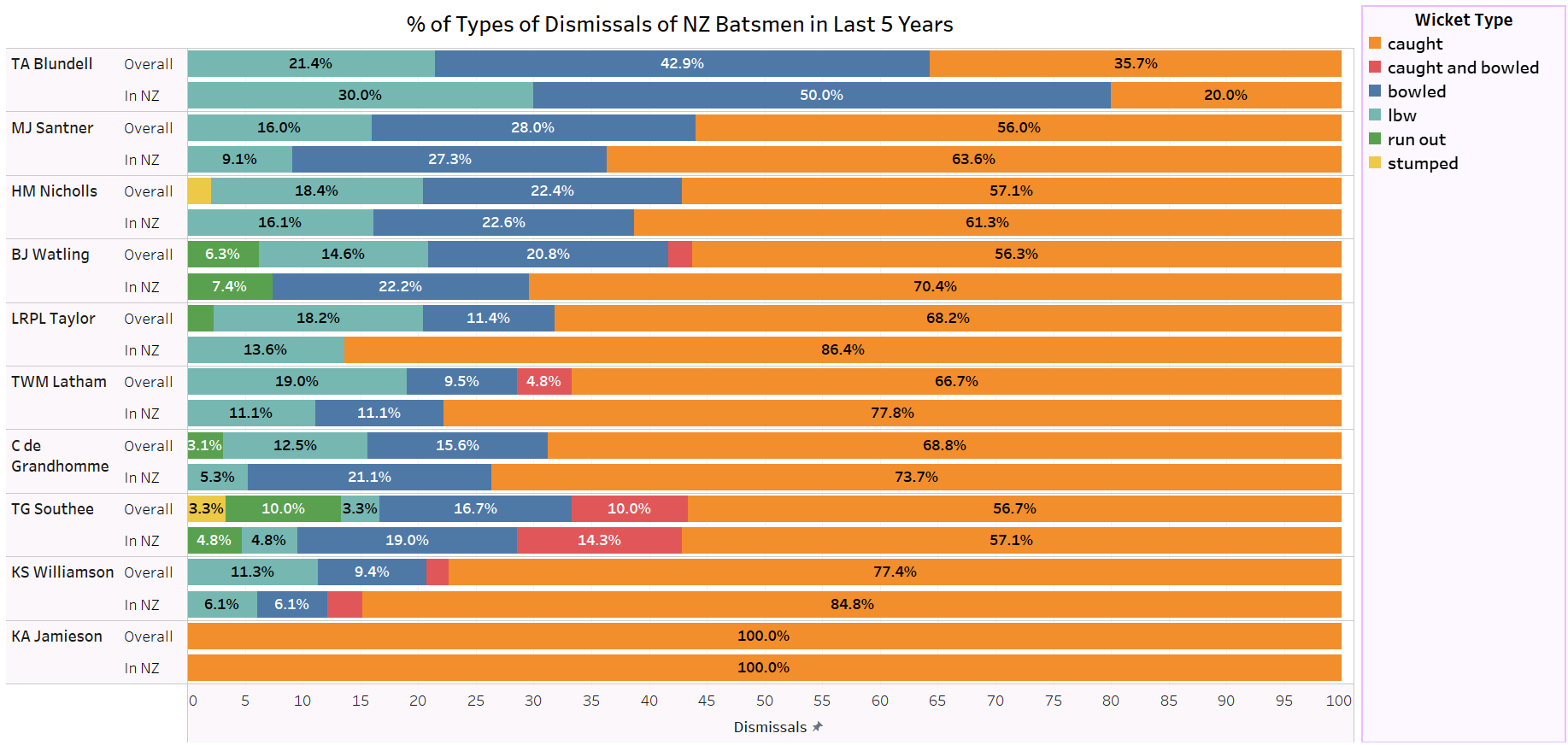
Fig 5: Percentage of different types of dismissals of NZ Batsmen in the last 5 years
Among New Zealand’s batsmen, Tom Blundell has by far the highest Bowled + LBW percentage. He’s been out in that fashion 9 out of 14 times in his Test career so far. Look at these two images. Both are from New Zealand’s home season of 2020–2021. You can see two of three potential flaws mentioned above- big gap between bat and pad, and starting outside off stump leading to missing straight balls.
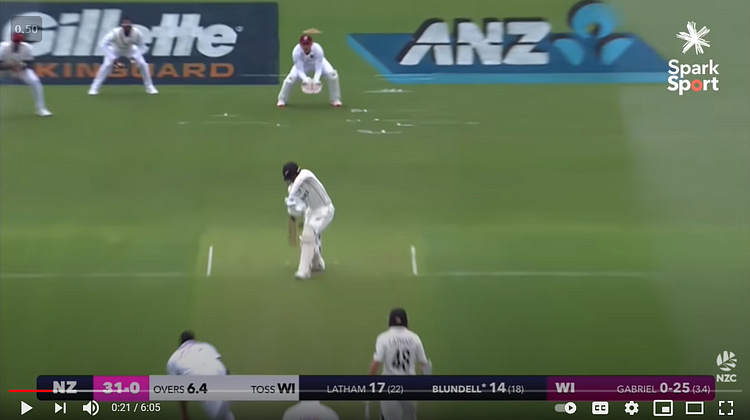
Fig 6 a: Tom Blundell getting bowled by Shannon Gabriel in the 2nd NZ v WI Test 2020

Fig 6b: Tom Blundell missing a straight ball getting LBW to Faheem Ashraf in the 2nd NZ v PAK Test 2021
Apart from Blundell, Nicholls and Watling also have substantially high Bowled/LBW percentages- 40.8% and 35.2% respectively. Nicholls specially struggles against the incoming or straight balls against the spinners. 7 of his 11 bowled dismissals have come against spinners- Yasir Shah(twice), Mehidy Hasan(twice), Keshav Maharaj, Taijul Islam, and JP Duminy. Ashwin and Jadeja will be licking their lips at the prospect of bowling to Nicholls in the WTC Final.
Meanwhile, Williamson is on another level in terms of technique. His Bowled+LBW percentage stands at a mere 20.7% in the last 5 years. He knows how to protect his stumps very well. Now, if you have been paying attention, you must remember that while showing Williamson’s phenomenal numbers against off spinners, it was mentioned that there’s a caveat. Look at Fig 7 to find out what it is.
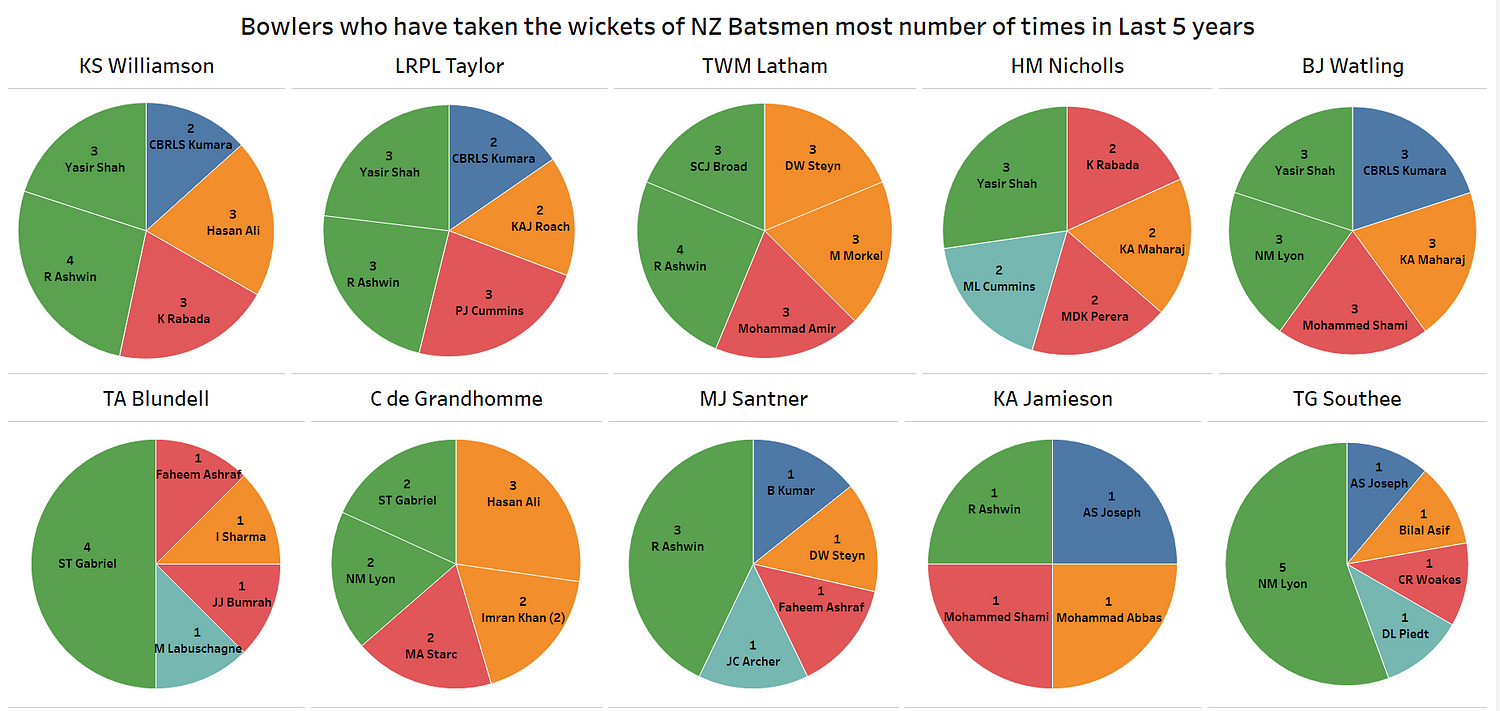
Fig 7: Bowlers who have taken the wickets of NZ Batsmen most number of times in the last 5 years
Williamson has been dismissed most number of times in the last 5 years by none other than Ravichandran Ashwin. Yes those dismissals came in India. Yes they came almost 5 years ago. But for a batsman to have such good numbers against a particular bowling type and then have so many dismissals against a bowler of the same bowling type, there has to be some technical as well mental battle going on between the two which Ashwin seems to be winning. All four of these dismissals have been either Bowled or LBW. As you can see in Fig 8 and 9, he gets tangled up when playing the back of a length delivery outside off which turns back in sharply.
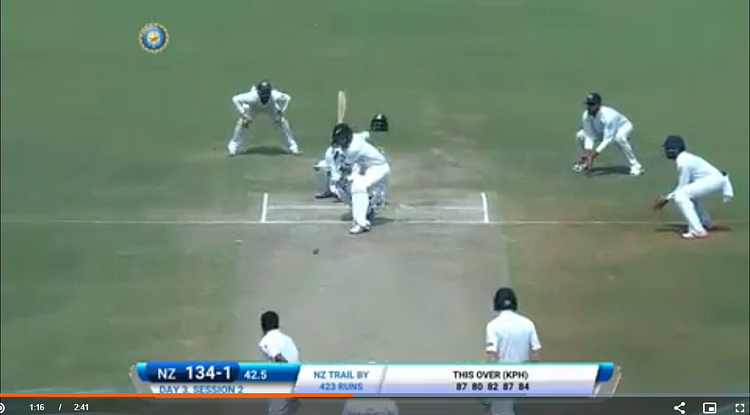

Fig 8 a: Ashwin getting Williamson bowled in the 3rd IND v NZ Test 2016
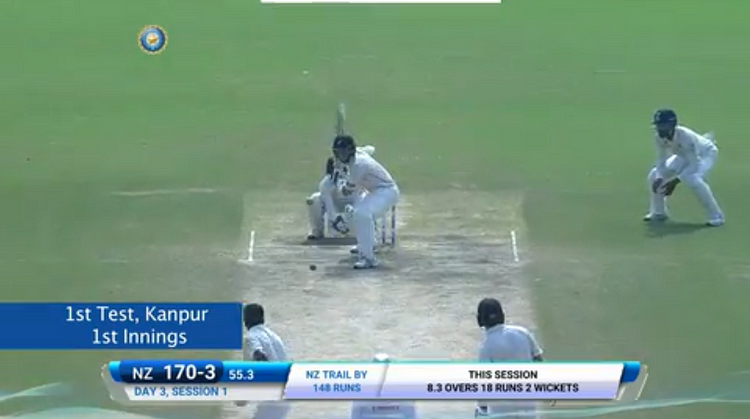

Fig 8 b: Ashwin getting Williamson bowled in the 1st IND v NZ Test 2016
Although you don’t really expect the ball to turn sharply in England, but this is Ashwin we are talking about, one of the most diligent students of the game. You can expect him to come up with some trick or the other. In fact, the planning of the Indian team recently has been bang on in general. Expect them to know most if not all of these numbers and more, and plan accordingly.
Unless of course, Devon Conway decides to lay waste to all those plans and script another fairytale in the WTC Final like he has done at the Home of Cricket, on debut. Unlikely, especially in this magnitude. But this is Test cricket. Jason Gillespie has a double century here, and Ajinkya Rahane doesn’t. You never know.

